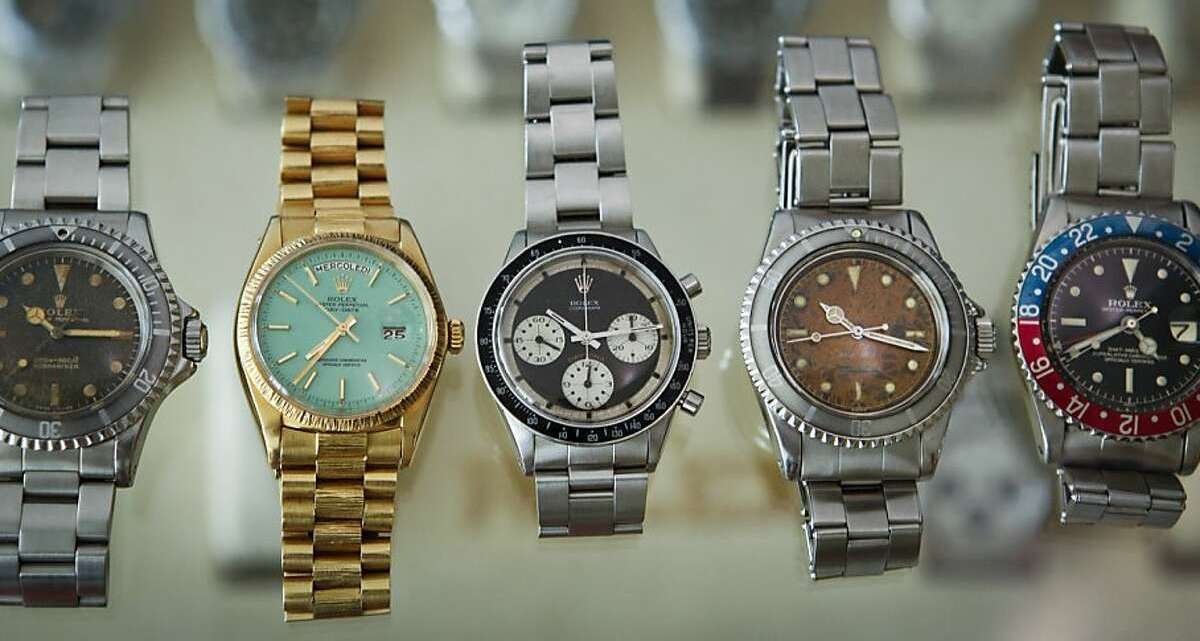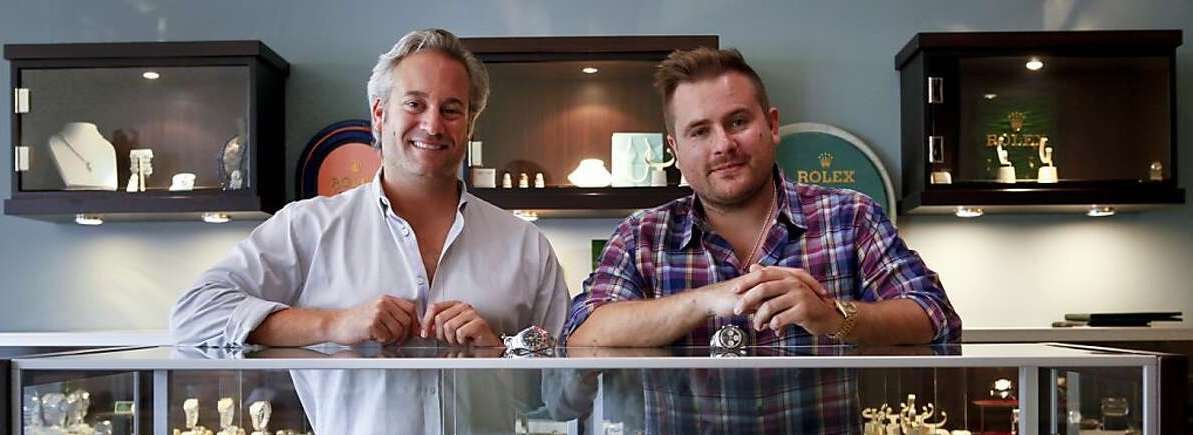H.Q. Milton gives collectors a hand with vintage Rolexes
View original article on the San Francisco Chronicle
Jacek Kozubek sprinted down a Baltimore side street, a Louis Vuitton bag stuffed with $27,000 in cash cradled like a baby in his arms. His presence garnered interest from those in the neighborhood, and he was relieved to slip into his destination, an antique shop. From the sea of furniture and yellowing crystal, the store's owner produced a 1950s Rolex Submariner co-branded with Serpico Y Laino, the Tiffany & Co. of Venezuela.
He told Kozubek how he had unearthed the watch, crammed inside a dusty nightstand, at an estate sale. The timepiece was more valuable than any of the antiques in the store - but Kozubek knew it was still priced well below market.
The day before, Kozubek and Scott Kaplan, co-owners of H.Q. Milton, a San Francisco watch dealership founded in 2008, had received the call that the watch was available. They booked Kozubek on the red eye from San Francisco to New York. He got the last rental car on the lot and drove three hours to Maryland.
The transaction was completed in minutes. Kozubek stuck the precious timepiece in the now-empty Louis Vuitton and concealed that in a garbage bag before heading back onto the street for his journey back to San Francisco, where he sold the watch for $68,000. It was 2010 and H.Q. Milton's first big buy.
Rolex built its reputation for reliability, precision and durability on these utilitarian models during the early and mid-19th century, when the brand innovated the basic wristwatch to accommodate the needs of deep-sea divers, extreme mountain climbers and special military forces.
But only in the past decade have vintage Rolex sports models become collector's items - more hip, understated and often more expensive than vintage dress models, which in initial retail were priced higher and perceived as more prestigious. Dress models, however, depreciate much as a new car driven off the sales lot, while many vintage sports models accumulate value over time.
Just recently, H.Q. Milton sold a Paul Newman Daytona 6239 - a style worn and made famous by the actor - for $75,000. When new in 1969, the watch sold for $450.
What makes a watch vintage? Kozubek said a watch must be at least 30 years old. An entry-level vintage sports model starts in the $3,000 to $7,000 range and soars upward of $200,000.
"Even if you had unlimited funds and you woke up in the morning and said, 'I want to buy a Military Submariner from 1977,' you can't," Kaplan said. "You have to search. You have to find it. So our customers are very different than the people who go and buy retail. ... People that we sell to - and I'm generalizing - are collectors. So they're looking for something like art."
H.Q. Milton is in the top tier of the world's vintage Rolex sports dealers. Inside its San Francisco office, iPhones ping as steadily as the tick of the second hand. It's a bit like a stock exchange floor, with transactions happening constantly over the phone and online, where all of H.Q. Milton's merchandise is listed, with buyers and sellers across the globe.
The office also serves as an appointment-only showroom. The unmarked second-floor space is located in the Mission District above a pawnshop. Inside are an unfussy black leather couch and display cases holding hundreds of rare watches, each owned outright by Kaplan and Kozubek, totaling in the millions of dollars. The watch blog Hodinkee describes the office as a "sanctuary of vintage timepieces."
"This is a place with very serious watches in a very relaxed, chill environment," said Kozubek, "where you can come in and look at the stuff, whereas you would normally never get to see it all together."
Kozubek, along with Kaplan, seems more likely to offer clients a craft beer than Champagne. The sales process typically turns into mutual gushing over the watches rather than a pitch. "We don't actually sell anything," Kaplan said. "It sells itself, so we just provide the information and we can make recommendations from the viewpoint of what is more collectible, what's going to appreciate better. But ultimately, it's like anything else; people are going to buy what they like."
When clients find the watch they want, there is often a visceral connection to its idiosyncrasies, the signs of wear that endow it with character. Age not only adds a patina but seems to anthropomorphize the vintage sports models.
"You can tell where the watch has been," Kaplan said. "Like if a watch was in Minneapolis, it's going to look one way. If it's in the Bahamas it's going to look another way. All these variations, changes in face and dial (color), naturally, are interesting."
For some, it's hard to understand why anyone would spend hundreds of thousands of dollars on a watch when they can get the time on their iPhone. Kaplan surmised: "It doesn't make sense to a lot of people. But it's exactly like, why do you have a Picasso on your wall that you paid $2 million for? Well, something about it moves you. It makes you feel good ... but also, if you put your money in a Picasso or a very rare vintage watch, it's safe. It's a good investment. You're getting something that you can enjoy, that you can put on, that makes you feel good. And it's never going to be worth less than what you paid. There are not a lot of things you can say that about."
H.Q. Milton: http://hqmilton.com. Sales by appointment.


